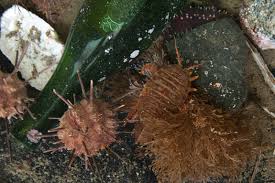The ocean includes over 70% in the Earth’s surface, with only 5% of it discovered. It has led to several fascinating breakthroughs on the planet of underwater animals. One of those may be the giant isopod, which is one of the exact same family as being the common woodlouse. Although they are not particularly gorgeous, Giant isopods are among the most fascinating critters located in the depths of your seas. In this article, we shall check out the fascinating arena of Giant isopods and what makes them differentiate yourself from the other serious-seas beings.
1. Giant isopods Qualities: Giant isopods are a form of crustacean that can get older to 2 plus a fifty percent toes lengthy and weigh up to four weight. These people have a flattened, oblong-formed body split into three specific sectors – your head, the thorax, and the stomach. Their most notable attribute is the piercing eyeballs, which sit down on top of stalks that let them observe their prey or predator without turning their heads. Giant isopods have strong, distinct claws that allow them to smash and take in even the hardest of seashells.
2. Environment: Giant isopods are located in the serious-ocean, about 1,000 to 8,000 ft below the area. They can be usually discovered near hydrothermal vents, that provide the required nutrients as harmful bacteria. They are most frequently located in the Atlantic, Pacific, and Indian Oceans, in which the normal water is cold, as well as the stress is higher. As a result of depth in which they reside, not a whole lot is famous concerning their reproduction or lifestyle routine.
3. Actions: Giant isopods are sluggish-relocating creatures that have a tendency to remain hidden in the stones or sediment around the seafloor. They are nocturnal critters, which implies they are most productive at night and usually cover throughout the day. These are scavengers and feast upon dead pets that tumble to the seafloor, in addition to reside organisms that they can trap with their solid jaws. They could reside for many years without foods and possess been recognized to live over 4 years without ingesting.
4. Importance: Though Giant isopods are certainly not commercially useful, they play a crucial role in the marine ecosystem. They are a significant food source for other deeply-ocean beings, including crabs, sharks, and species of fish. Their presence signifies the healthiness of strong-ocean ecosystems, which may have long lasting results in the world’s oceans and weather. Due to the fact 50 % in the fresh air we breathe in comes from the seas, it is vital to know and shield these ecosystems and also the animals that live in them.
5. Efficiency: Regrettably, small is known regarding the human population of Giant isopods, as well as their deeply-water environment makes it challenging to review them or their ecosystem. Global warming, serious-ocean exploration, and overfishing present a tremendous hazard to the critters and also the strong-ocean ecosystems, which makes protecting them even more significant. Consequently, it is crucial to make certain that defensive measures are put in place, and initiatives are made to help save these exciting critters and make certain that they, and their distinctive ecosystems, continue to flourish down the road.
To put it briefly
The giant isopod is a fascinating being that is still simply being reviewed, therefore we have a lot to discover out of this deep-sea being. As the oceans maintain several amazing things, it is important to guard the unusual, interesting, and critical ecosystems that exist serious below the surface. It is perfectly up to us to shield them and make sure that they still prosper for generations to come to savor.



